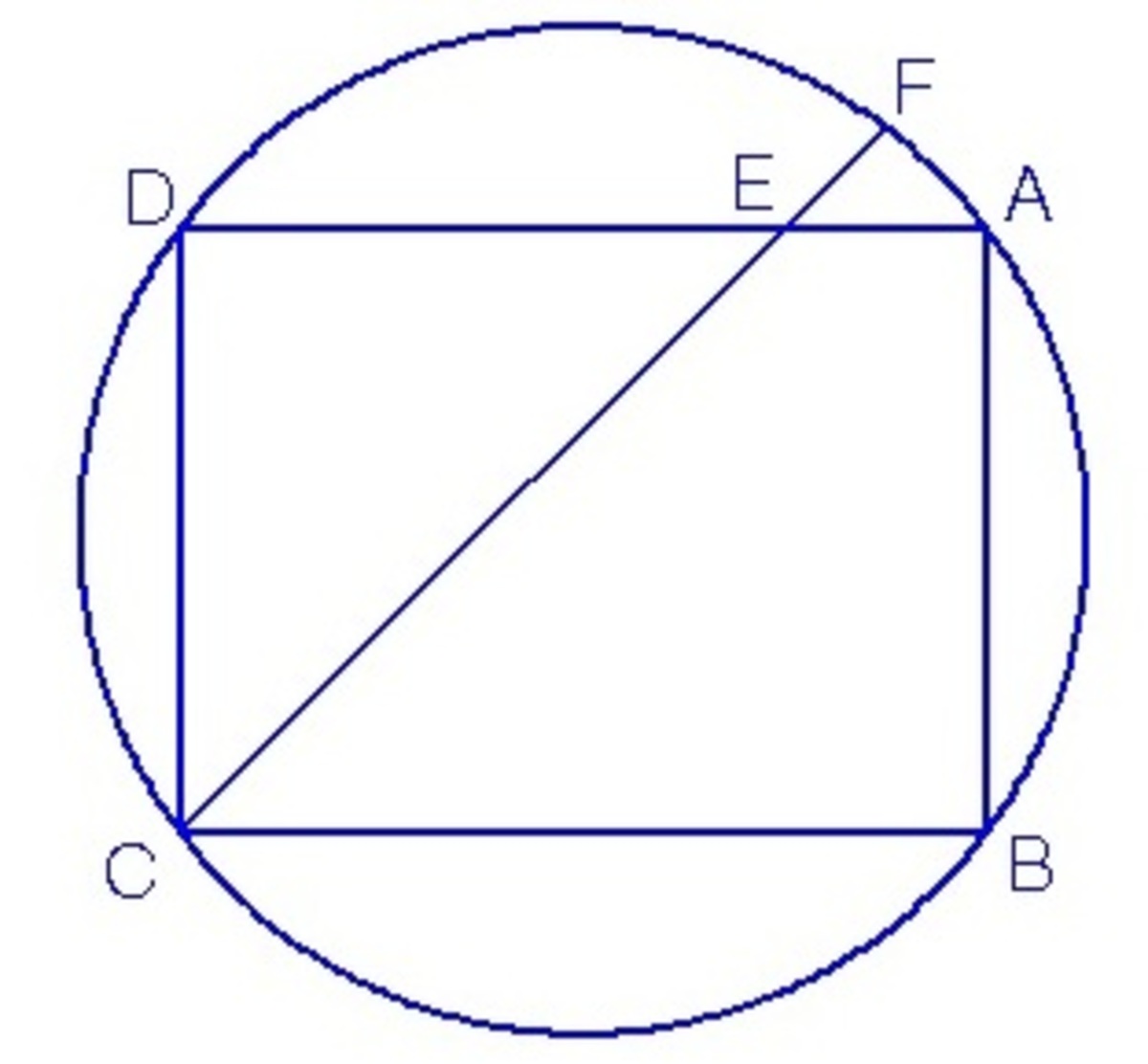Cyclic Quadrilateral
Rectangle
is inscribed in a circle. Point
is on side
so that
and
. If
is extended, it meets the circumcircle of the rectangle at point
. Given that
, find
. If the answer is of the form
where
is a positive integer, give your answer as
only.

The answer is 15.
This section requires Javascript.
You are seeing this because something didn't load right. We suggest you, (a) try
refreshing the page, (b) enabling javascript if it is disabled on your browser and,
finally, (c)
loading the
non-javascript version of this page
. We're sorry about the hassle.
Relevant wiki: Cyclic Quadrilaterals